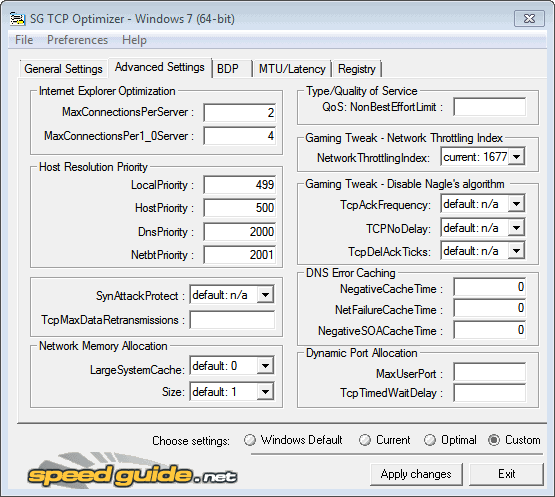Download Speed Registry Tweak For Windows 7 Internet Connection
This article is excerpted from the book from Que Publishing. Reprinted with permission of Pearson Education Inc., copyright 2010. Every time you make a configuration change, that information is automatically written to the Registry.

Change the system time, and the Registry is updated; change your desktop wallpaper, the Registry is updated; change the home page in Internet Explorer, the Registry is updated. The Registry is also updated whenever you install a new software program or hardware device. And it all happens automatically, in the background. When Windows needs to do just about anything, it accesses the Registry to obtain the proper configuration information. In this sense, the Registry functions like a control center for your entire computer system; it defines how every part of your system looks and works. Organizing the Registry The Registry is organized into five major sections, called hives. Each hive is stored in its own system file on your PC's hard disk.
These hives include the following:. HKEYCLASSESROOT. Contains information about registered applications, including file associations and OLE object classes.
(This hive displays the same settings as the HKEYLOCALMACHINE Software Classes key.). HKEYCURRENTUSER. This hive is a subset of the HKEYUSERS hive, pertaining to the current user of the PC. It contains all attributes for the desktop environment and network connections.
HKEYLOCALMACHINE. Contains most of the settings for your PC's hardware, system software, and individual applications. HKEYUSERS. Contains subkeys corresponding to the HKEYCURRENTUSER hives for all users of the PC, not just the current user. HKEYCURRENTCONFIG. Contains information gathered when Windows first launches, such as settings pertaining to your PC's display and printers. The data stored in this hive is not permanently stored on disk, but rather is regenerated each time your PC boots.
Each hive is further organized into a variety of keys and subkeys that can be represented by a series of folders and subfolders. For example, if you want to find configuration information for which programs Windows loads at launch, you would look in the following key: HKEYLOCALMACHINE SOFTWARE Microsoft Windows CurrentVersion Run.
Third-Party Programs
The settings or data for each individual key or subkey is called the value. Each value in the Registry is defined by a value name (often called just the value), the type of data used for that entry, and the value of that data. Want more in-depth info about the Windows Registry?